|
Centrip Editorial Board
Must-Eat Foods in Nagoya: Centrip Japan's Complete Guide to Nagoya

Nagoya cuisine is rich in color and taste. Miso, a seasoning made from fermented beans, is used for many Nagoya cuisines. So, most of their colors are brown. Nagoya has cultivated its own unique food culture, which you can rarely have at any other areas in Japan.
Miso-Nikomi Udon
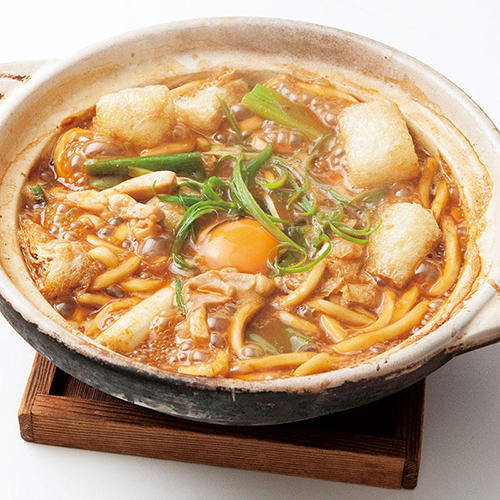 Udon to Surprise Even the Japanese
Udon to Surprise Even the JapaneseThe soup is based on Mame-miso and Hacho-miso, the original miso of Japan, is brown in color. The noodles are surprisingly only half-boiled—to make them chewy. People use the cover as a small plate. This udon is the first thing which comes to Japanese people’s mind when they think of Nagoya as their travel destination. It is totally different from what you think of udon in general.
Miso Pork Cutlet
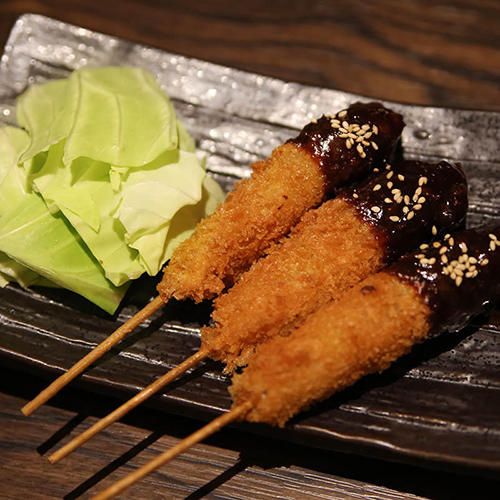 Nagoya is the only place people use miso-based sauces for breaded pork. Restuarants make their own original miso sauce from Mame (bean)-miso, sweet cooking sake, sugar, and soup stock. People dip breaded pork cutlets in this sauce. Many people also buy this miso for home consumption. The sauce turns breaded pork cutlet into an entirely different dish.
Nagoya is the only place people use miso-based sauces for breaded pork. Restuarants make their own original miso sauce from Mame (bean)-miso, sweet cooking sake, sugar, and soup stock. People dip breaded pork cutlets in this sauce. Many people also buy this miso for home consumption. The sauce turns breaded pork cutlet into an entirely different dish.
Doteni & Dotemeshi
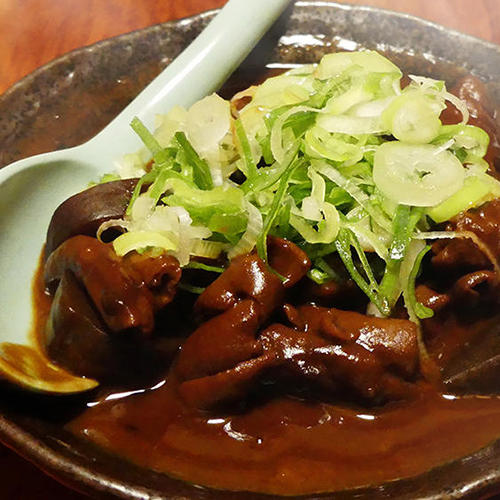 Dote-ni (stewed beef tendon) and Dote-meshi (stewed beef tendon and rice) have been common dishes since the Taisho Period. Beef tendon and offal stewed with Mame (bean)-miso and Mirin(sweet sake) are called Dote-ni or Dote-yaki. The history of miso-katsu (pork cutlet) was said to have started by dipping pork skeweres into the pot of Dote-ni. It's a great example of Nagoya-style homecooking.
Dote-ni (stewed beef tendon) and Dote-meshi (stewed beef tendon and rice) have been common dishes since the Taisho Period. Beef tendon and offal stewed with Mame (bean)-miso and Mirin(sweet sake) are called Dote-ni or Dote-yaki. The history of miso-katsu (pork cutlet) was said to have started by dipping pork skeweres into the pot of Dote-ni. It's a great example of Nagoya-style homecooking.
Miso Oden
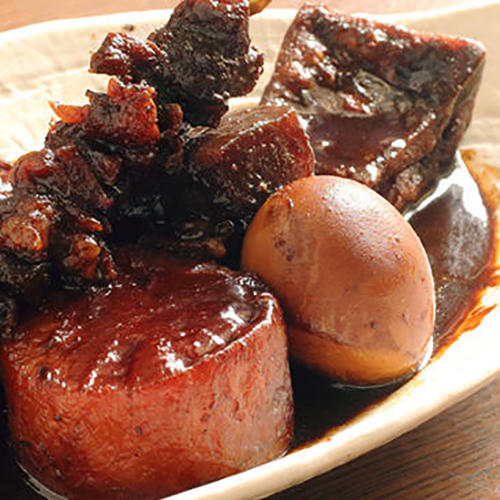 More miso!
More miso!Oden is one of the most famous dishes in Japan: a variety of food is simmered in bonito and seaweed broth for a considerable amount of time. We have two kinds of Oden in Nagoya—Kantodaki and Miso-oden, which is stewed with miso. They say people started eating this during the Muromachi Period.
Hitsumabushi
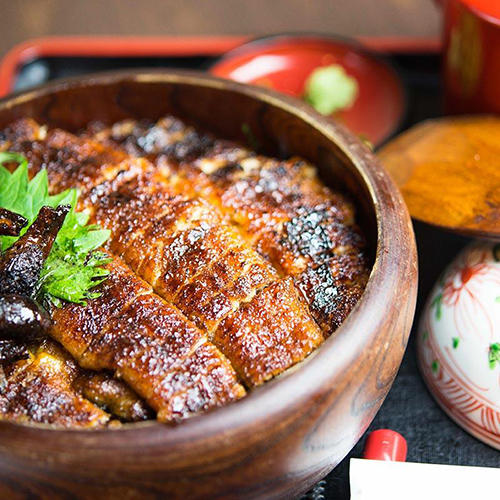 High-End Nagoya Gourmet
High-End Nagoya GourmetBefore Nagoya’s local food drew attention as Nagoya-meshi (cuisine), many foodies already knew about Hitsumabushi and Nagoya people’s unique way to eat it. Hitsumabushi is barbecued eel over rice. There are three different ways to eat Hitsumabushi and also rules on how you eat it. It's a prime example of Nagoya's unique food traditions.
Chicken Wings
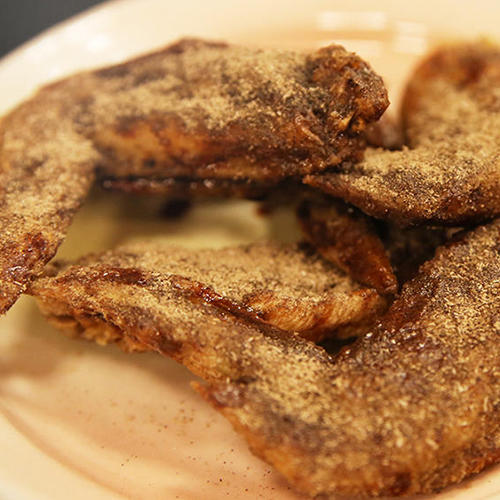 You know you're a Nagoyan when you can eat these without making a mess. Originally sold at Furaibo, Sekai no Yamachan and Tubasaya made deep fried chicken wings famous. Nowadays, there are many restaurants which serve them. There is a certain rule for eating them and people in Nagoya learn how to when they are small. Chicken wings were used for broth, but people here started to fry them.
You know you're a Nagoyan when you can eat these without making a mess. Originally sold at Furaibo, Sekai no Yamachan and Tubasaya made deep fried chicken wings famous. Nowadays, there are many restaurants which serve them. There is a certain rule for eating them and people in Nagoya learn how to when they are small. Chicken wings were used for broth, but people here started to fry them.
Kishimen
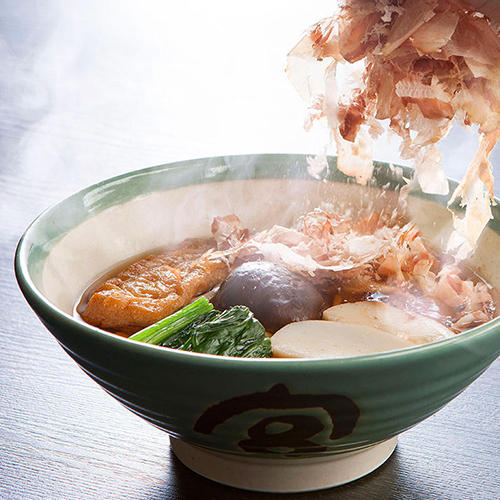 Nagoya's Other Udon
Nagoya's Other UdonKishimen is a flat udon that's native to Nagoya. The soup tastes a little sweet because of the sweet sake in it. Boiled spinach and fried tofu are typical toppings. Try kishimen topped with bonito flakes. Some restaurants serve Kishimen in place of pasta.
Ankake Spaghetti
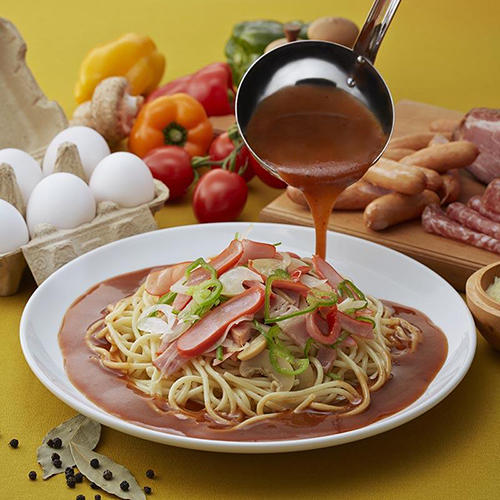 The perfect dish to get you motivated! It's considered an energy food for Nagoya businessmen. Rich in taste and volume. Thick noodles are first boiled and then fried to be crispy. The noodles are then covered in a meat and vegetables sauce. Yokoi, the restaurant which created Ankake spaghetti, and So-re is the one which started serving it. Karame-tei came up with the name, Ankake spaghetti. Try each restaurant to taste the difference.
The perfect dish to get you motivated! It's considered an energy food for Nagoya businessmen. Rich in taste and volume. Thick noodles are first boiled and then fried to be crispy. The noodles are then covered in a meat and vegetables sauce. Yokoi, the restaurant which created Ankake spaghetti, and So-re is the one which started serving it. Karame-tei came up with the name, Ankake spaghetti. Try each restaurant to taste the difference.
Sugakiya Noodles
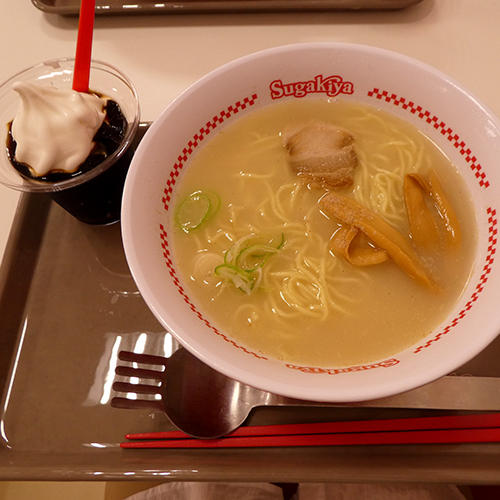 Nagoya’s Soul Food
Nagoya’s Soul FoodPork-bone based ramen mixed with a strong flavor of seaweed and seafood. These are called Nagoya’s fast food because you can sit down at the counter and get a piping hot bowl really quickly. The Sugakiya spork is available for sale at the MoMA in NY due to its unique and superior design.
Taiwan Noodle
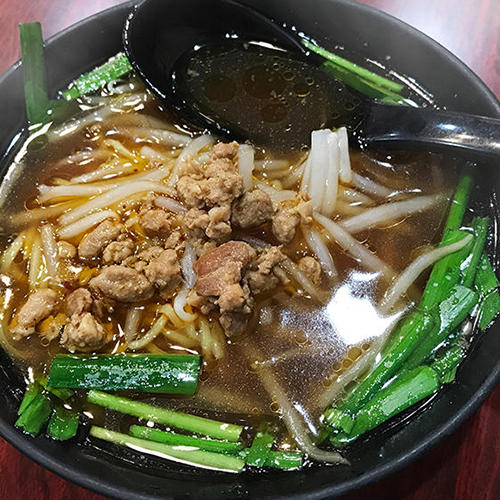 "Taiwanese Ramen" to Surprise Even Taiwanese
"Taiwanese Ramen" to Surprise Even TaiwaneseThis Nagoya concotion isn't actually available in Taiwan. These are extremely spicey soy-sauce based noodles topped with fried ground pork, leeks, and bean sprouts. It was created by Taiwanese living in Nagoya. Misen, the first restaurant of Taiwan Noodles, serves a less spicy Taiwan Ramen American, a spicy and thick Taiwan Ramen Italian, and a super spicy Taiwan Ramen African.
Italian Spaghetti
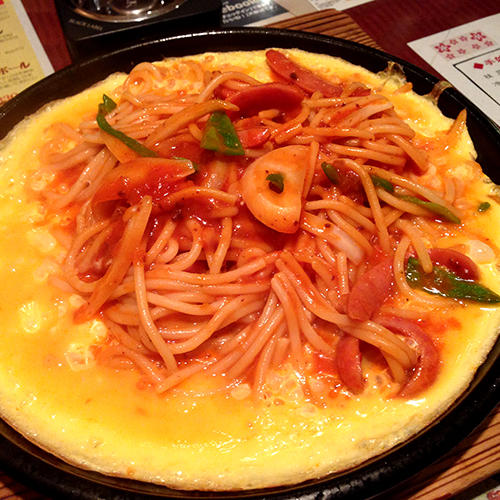 You can not find this spaghetti in Italy. Nagoya is the birthplace for this spaghetti. Red-colored sausages, ham, bacons, onions, green peppers, and mushrooms are stir fried with ketchup to cover the noodles. Beaten eggs are poured over a hot iron plate and the spaghetti is place on top. It is a Japanese-style spaghetti. The restaurant owner of Yuki, a long-established café, came up with the idea of using eggs to keep spaghetti warm.
You can not find this spaghetti in Italy. Nagoya is the birthplace for this spaghetti. Red-colored sausages, ham, bacons, onions, green peppers, and mushrooms are stir fried with ketchup to cover the noodles. Beaten eggs are poured over a hot iron plate and the spaghetti is place on top. It is a Japanese-style spaghetti. The restaurant owner of Yuki, a long-established café, came up with the idea of using eggs to keep spaghetti warm.
Nagoya Cochin
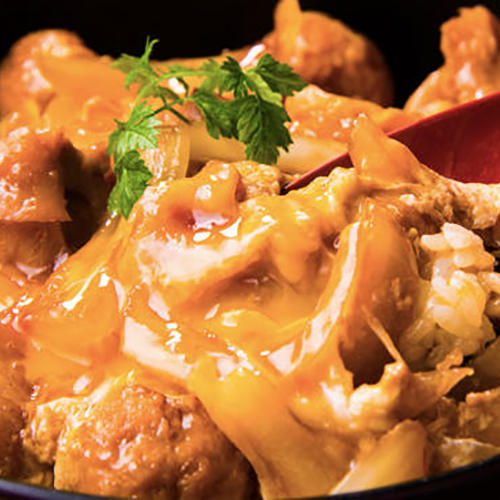 The King of Nagoya Cuisine
The King of Nagoya CuisineNagoya Cochin, locally grown chicken, has many ways to be surved such as sukiyaki, chicken casserole, chicken and egg rice bowls, chicken skewers, and fried chicken. It is the most famous chicken in Japan. It was once on the verge of extinction due to the rising number of broilers.
Tenmusu
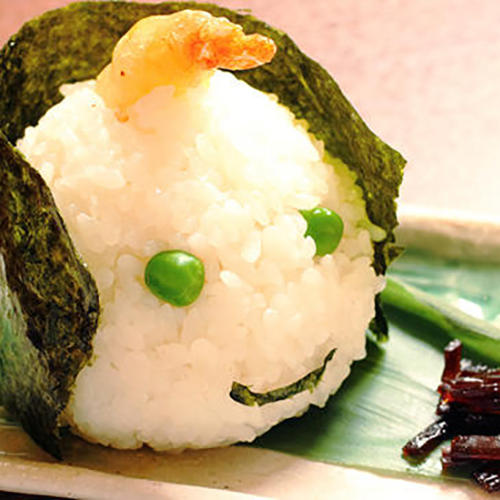 Bite-Sized Bento Lunch
Bite-Sized Bento LunchThis is a very popular rice ball with shrimp tempura inside. Since it tastes great without heating it up, people love to take it home. It especially drew attention when celebrities started buying tenmusu and eventually became one of Nagoya’s unique local foods. Since some stores in Tokyo and Osaka began selling it as “Nagoya’s unique tenmusu,” it became famous nationwide. You can buy it in both cities as well as Nagoya..
Curry and Udon
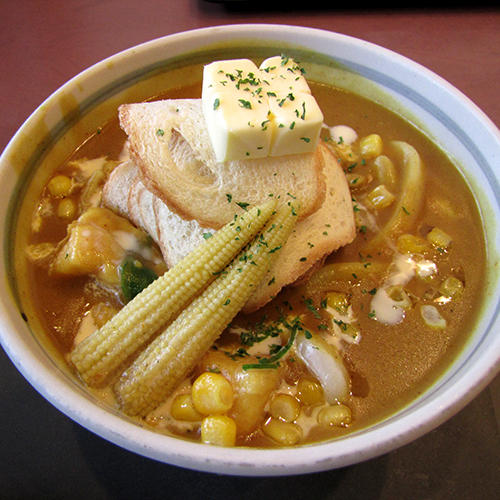 Sticky and Spicy
Sticky and SpicyYou can find curry and udon everywhere in Japan, but curry and udon in Nagoya is special. It uses chicken and seafood based soup. Most common Japanese curries and udon use potato starch, but Nagoya’s uses flour, which makes Nagoya's udon thick and sticky. Unlike regular curry and udon, Nagoya’s unique curry and udon is slow to cool down, and splatters less so you won't stain your clothes!
Fried Shrimp
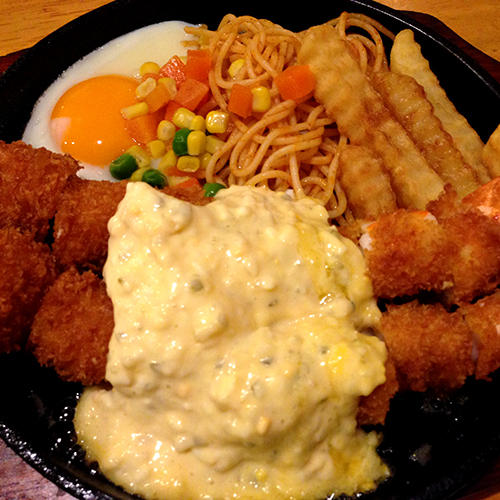 Nagoya’s Signature Food: Deep-Fried Shrimp
Nagoya’s Signature Food: Deep-Fried ShrimpYou can eat fried shrimp anywhere in Japan, but Nagoya’s fried shrimp is special. Nagoya has restaurants which serve giant fried shrimp and some restaurants even created originales dish due to giant fried shrimp’s similarity to the Golden Carp atop Nagoya Castle. Also, a lot of Nagoya-related gift items made to look like fried shrimp.
Kissaten
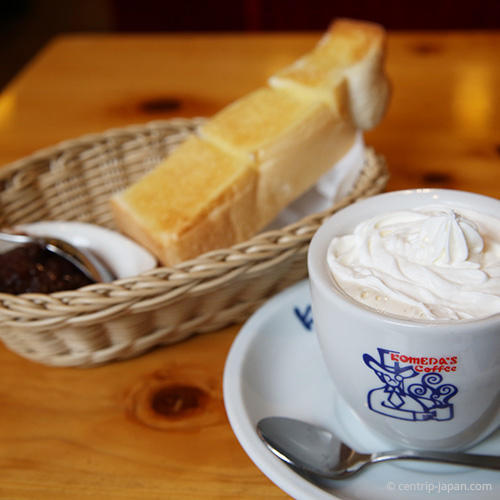 It is NOT a café, it is Kissaten.
It is NOT a café, it is Kissaten. The thing called “Morning” is unique to Nagoya. If you order coffee, you will get a “morning set” for free. A “morning” usually means “a toast, salad, and a boiled egg.” In places where there are many Kissaten, some serve ochazuke, miso soup, chawanmushi, and udon as well. Sometimes, they serve peanuts and cakes outside “morning” hour for free.
Read More
- All About Nagoya: Centrip Japan's Complete Guide to Nagoya
- Getting Around Nagoya: Centrip Japan's Complete Guide to Nagoya
- Nagoya Local Information : Centrip Japan's Complete Guide to Nagoya
- Nagoya Transportation: Centrip Japan's Complete Guide to Nagoya
- Must-See Tourist Spots in Nagoya: Centrip Japan's Complete Guide to Nagoya
- Nagoya Souvenirs: Centrip Japan's Complete Guide to Nagoya
- Centrip Japan's Complete Guide to Nagoya



